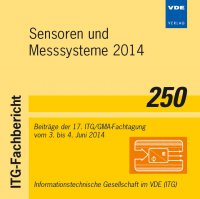Applying 3D Least Squares Matching Technique for registration of data taken with an 3D Scanner of Human Body
Konferenz: Sensoren und Messsysteme 2014 - Beiträge der 17. ITG/GMA-Fachtagung
03.06.2014 - 04.06.2014 in Nürnberg, Deutschland
Tagungsband: Sensoren und Messsysteme 2014
Seiten: 5Sprache: EnglischTyp: PDF
Persönliche VDE-Mitglieder erhalten auf diesen Artikel 10% Rabatt
Autoren:
Fateeva, Irina; Stiller, Christoph (Institut für Mess- und Regelungstechnik, Karlsruher Institut fuer Technologie (KIT), Engler-Bunte-Ring 21, 76131 Karlsruhe, Germany)
Rodriguez, Miguel Ares; Royo, Santiago Royo (Centre de Desenvolupament de Sensors, Instrumentació i Sistemes (CD6), Universitat Politècnica de Catalunya (UPC Barcelona Tech) Rambla Sant Nebridi 10, E08222 Terrassa, Spain)
Inhalt:
In this work we implemented matching of 3D surfaces, in particular, their registration in a common coordinate system. At the moment, in coordinate metrology there are different approaches for implementing matching of 3D point cloud data. LSM (Least Square Matching) is one of the most robust and applicable to a wide range of data types. However, there are only a few implementations in human body scanned samples. Matching needs to be used when we can not cover all the sample surface in one measurement or when the goal is to have more precise data from the object. In this work, we performed processing of point clouds from multi-view measurements: color 3D scanned data of the human body, with height accuracy of 0.5 mm RMS. We applied 3D LSM algorithm for this purpose. Our implementation is more precise (0.7 – 0.9 mm mean mismatch between the surfaces vs 1.5 mm in than in existing work, and involves downsampling as a tool for a better precision. This paper is organized in four sections: section 2 describes the main principles of LSM algorithm used. Section 3 presents the 3D scanner prototype, on which we acquired measurements. Finally, section 4 gives experimental results and section 5 briefly summarizes the conclusions of the work.


